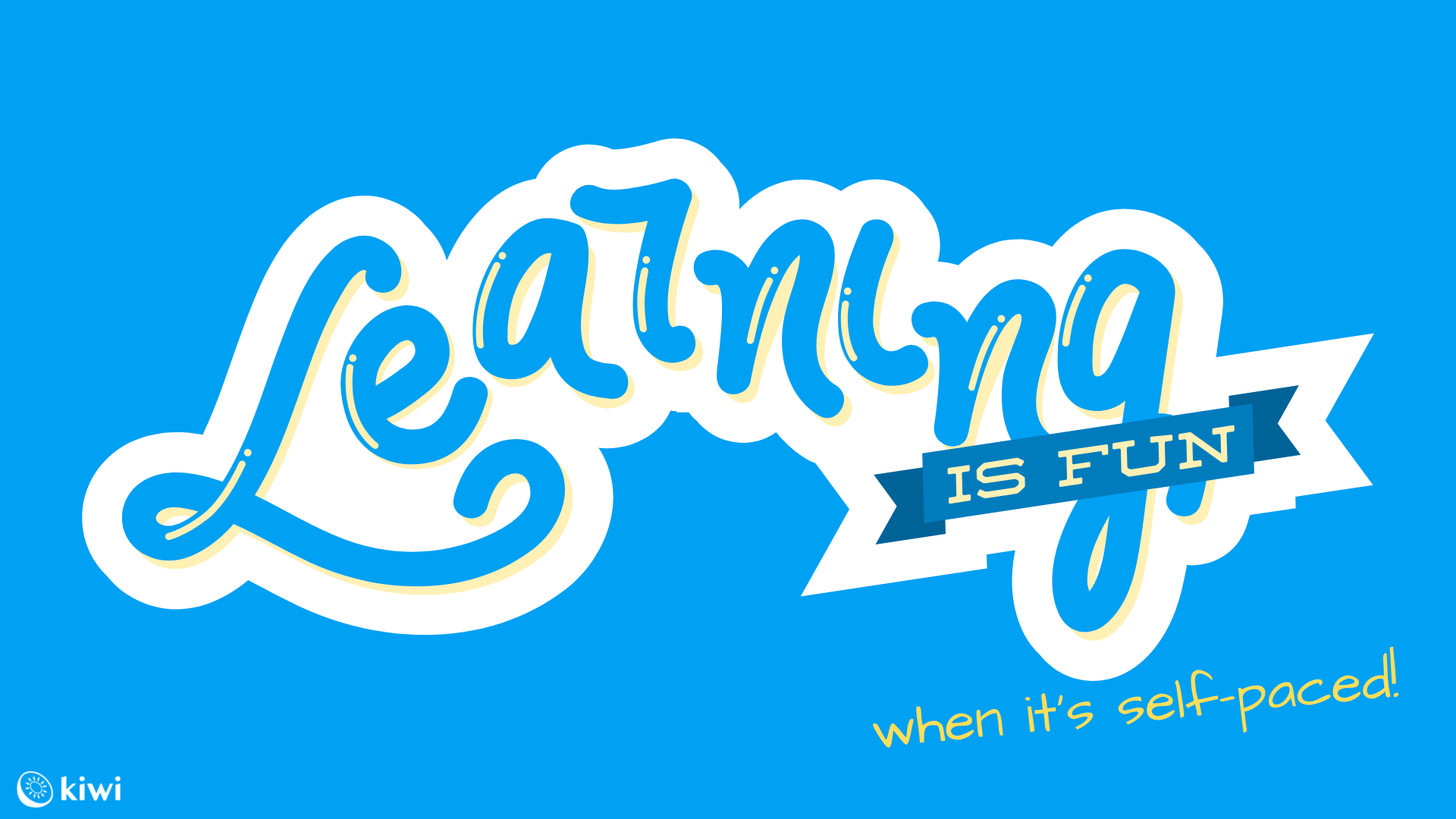26 Apr

Why is self-paced eLearning dominating modern employee training?
Definition of Self-Paced Learning
According to Business Dictionary, self-paced learning is defined like this:
Teach-yourself method of learning that is initiated and directed by the learner.
What is Self-Paced Learning?
Self-paced learning is a learning method in which the learner has the control of the amount of material and duration they need in order to learn the information properly. It differs from other learning methods because the learner is in control of what they learn and when they learn it.
Self-paced courses don’t follow a set schedule. Contrarily, they are all about flexibility. The learner doesn’t have to be online at the same time as the instructor (if there even is one) as it happens in synchronous learning. All of the course materials are available as soon as the course starts, and the learner goes through them at their own speed.
Benefits of Self-Paced Learning
1. Learners are able to go at their own pace.
We keep repeating this but it is what even the term ‘self-paced learning’ itself suggests. Learners initiate themselves when they want to learn, and for specific courses, this could happen even when they’re on the bus or train while going to work thanks to mLearning.
However, if you as a learner would like to learn the core of a piece of content within the lesson and you require a longer period of time for it so that you retain the information, then you are able to take as much time as you need through self-paced learning.
2. There is no scheduling involved.
This is a great advantage for busy people with little free time. They shouldn’t have to sacrifice other responsibilities just to suit the time the instructor assigned for the course to be held.
Likewise, for organizations training a large number of employees with eLearning, why worry with scheduling conflicts or venue capacity when you can just provide the employees with the material and just tell them the deadline for completion. It’s all in their hands afterward. Easier for you as a trainer and them as learners.
3. Higher knowledge retention and support of inductive thinking
Knowledge retention and memory performance are one of the benefits that all self-paced learners benefit. Since they have no time pressure, memory performance improves greatly.
Moreover, self-paced learning supports inductive thinking which refers to the ability to grasp information and then come up with conclusions based on that information. The implementation of gamification techniques in e-learning is one way to support this.
4. It’s suitable for different learning styles.
We’re all aware there are many different learning styles, and it’s almost impossible for a traditional classroom to only have students of one style. There will always be ones that understand a concept quicker and ones that need more time, ones that skim and ones that scan, ones that are night owls and those that are early birds. Self-paced learning satisfies all types of learners.
5. It’s ideal for permanent content.
If you’re an organization that continuously delivers information to new employees that isn’t going to change in the near future, such as company policies, then self-paced learning is the option that makes the most sense to use. It makes it possible to distribute key information quickly to a large number of people.
How to decide whether self-paced learning is for you
Self-paced learning is the best option for you if you don’t want to have scheduling issues but rather want to learn at your own pace and time. However, you do need to be self-disciplined to actually finish the courses you signed up for, even if it is at 3 a.m.
Do LMSs support self-paced learning?
Yes, our LMS, for one, is designed for self-paced learning. It provides a wealth of knowledge and enables learners to learn whenever they are motivated to do so. It makes genuinely makes training less of a hassle for employees.
Should you try a blended learning approach to maximize training efficiency?
For all of your content that is isn’t likely to change anytime soon – like product features and benefits, customer service methods, and job competencies – it’s advisable to use self-paced learning in your training program. On occasions that the learning content is more dynamic and discussions are required to help the learning process, you have the option to use live, online training.
Happy learning whenever you feel like it!
Most popular posts
-
 Online Learning vs Face t...
141k views | posted on April 5, 2019
Online Learning vs Face t...
141k views | posted on April 5, 2019
-
 Top 10 Types of Employee...
117.1k views | posted on May 26, 2019
Top 10 Types of Employee...
117.1k views | posted on May 26, 2019
-
 10 Must-Have Skills and Q...
42.8k views | posted on July 8, 2019
10 Must-Have Skills and Q...
42.8k views | posted on July 8, 2019
-
 Induction Training – How...
23.8k views | posted on July 1, 2019
Induction Training – How...
23.8k views | posted on July 1, 2019
-
 9 Most Effective Training...
20.7k views | posted on July 15, 2019
9 Most Effective Training...
20.7k views | posted on July 15, 2019

Follow us